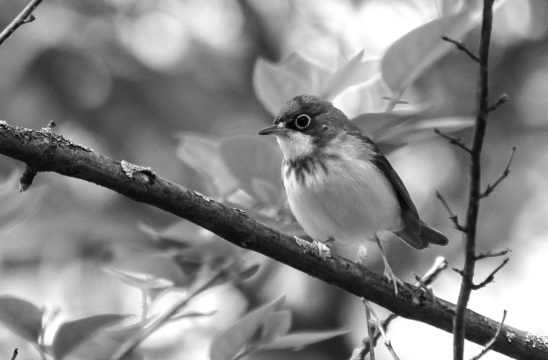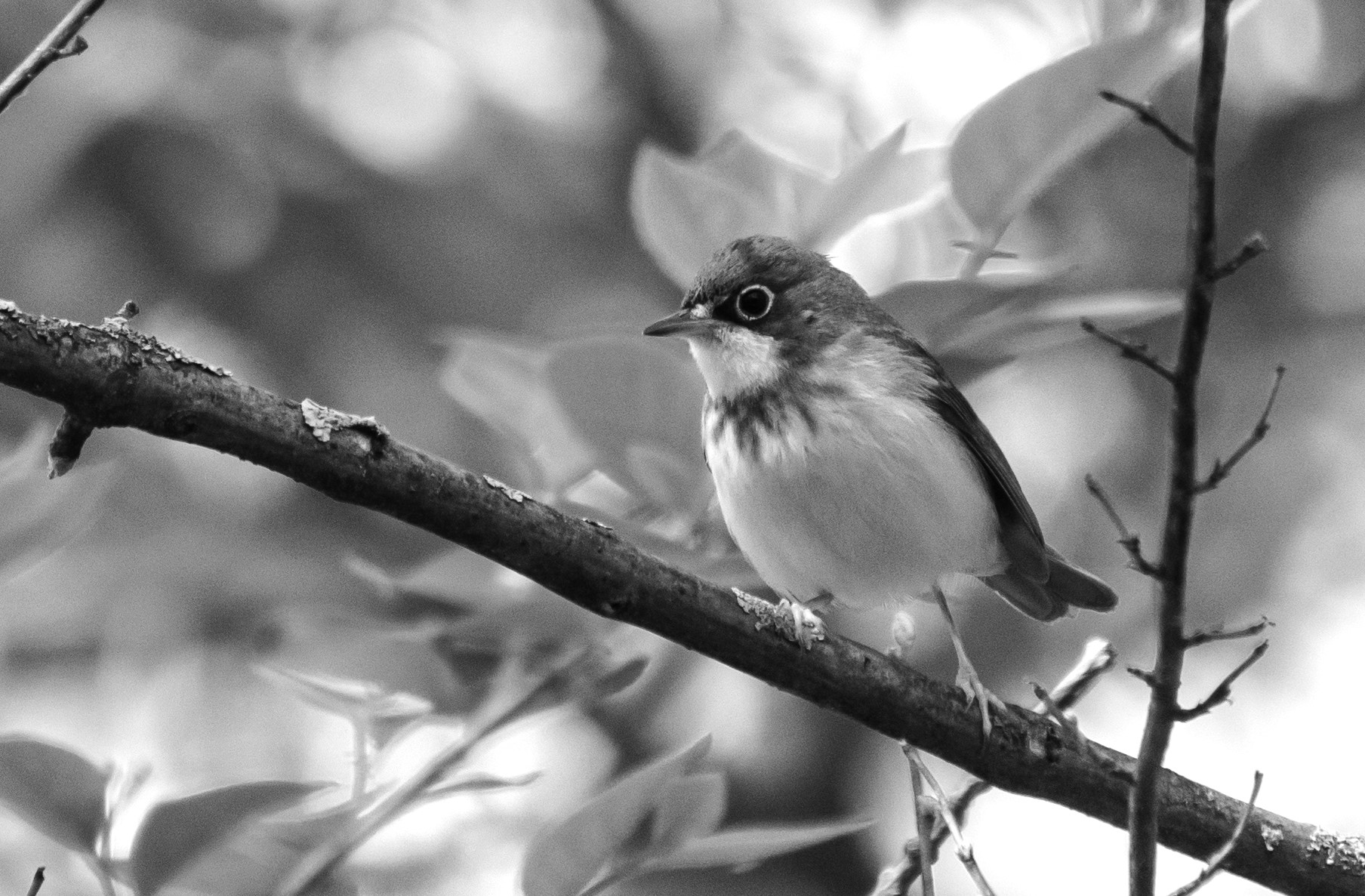Bird of the week: Canada Warbler
About: Warblers have solid gray wings and backs, and a bright yellow chest and throat. Males have a striking black spotted necklace while females and immatures’ necklaces are less prominent.
Where to find this bird: Often found with other song birds, but tend to stay a bit lower to the ground and like thick brushy areas.
When to find this bird: May through mid-June and mid-August through mid-September.
Fun fact: Canada warblers spend very little time on their breeding grounds and usually only raise one brood. They migrate over 6,000 miles round trip every year.

How can we welcome birds onto campus?
In the last few articles, I’ve looked at extinct birds of Wisconsin and the tipping point species found close to our campus, but I want to take a look at what our campus can do to be more bird-friendly. The Lawrence campus boasts a pretty good bird list for the area — around 155 species have been recorded on campus — but that does not mean our campus is safe for our feathered friends. Unfortunately, no urban area is safe for birds, but there is a lot more we can do to help our feathered friends pass safely through our home.
One of the lovely parts of our campus is our collection of large windows overlooking the Fox River. These windows make our buildings more welcoming and allow for gorgeous views; however, windows kill many birds each year. Discussing this with local birders made me aware of how lethal our campus windows are. We identified numerous species which were killed by our windows, including American tree sparrows, yellow-bellied sapsuckers and scarlet tanagers.
Behind outdoor cats, windows are the number two killer of birds in the U.S., because they reflect their surroundings and birds mistakenly fly into them. This does not always kill birds, but the impact frequently stuns birds and causes brain damage which, even though they may continue living, may reduce their lifespan and make them more vulnerable to predators.
Luckily, we can still keep our windows and reduce bird kills by putting up patterns into the windows that break the reflections, installing netting on the outside that physically prevents birds from flying into the glass or making glass appear opaque by plating outer glass surfaces with perforated vinyl film. This issue of bird collisions is a particularly big problem for the Warch Campus Center, which has extremely large windows.
Additionally, the amount of light pollution our campus gives off is quite large. Reducing the number of lights on during the night, particularly during peak migration in spring and fall (roughly mid-April through early June and Sept. through late Oct.), will also help us protect birds from being killed and safely pass through our campus.
The issue with light pollution is that birds have not adjusted to artificial lights and get them confused with the sun. Windows with lights confuse birds further and increase the number of birds which fly into them. Turning off, or at the very least down, unneeded lights will not only help birds pass through our campus safely but also reduce energy consumption and expenses for our campus.
If we directed more of our lights downward it would also reduce the light pollution in the sky and allow us on the ground to still see in the dark. A slightly more difficult solution is turning our outdoor lights and those in big windows blue or green because these colors do not confuse birds as much.
We can also help make our campus more bird-friendly by limiting pesticide use, planting more native plants and allowing more spaces that are not frequently used by people to grow into bird habitat. I know that the local birding club has been interested in helping make our campus more bird-friendly and are even ready to help install a peregrine falcon nest box to welcome a breeding pair of falcons to our campus! Can you imagine if the fastest bird in the world made their home on campus?
We can all help make our community more bird-friendly, whether that is turning off our unneeded lights, putting up things in our dorm windows to reduce bird collisions or closing our curtains at night when we have our lights on.

